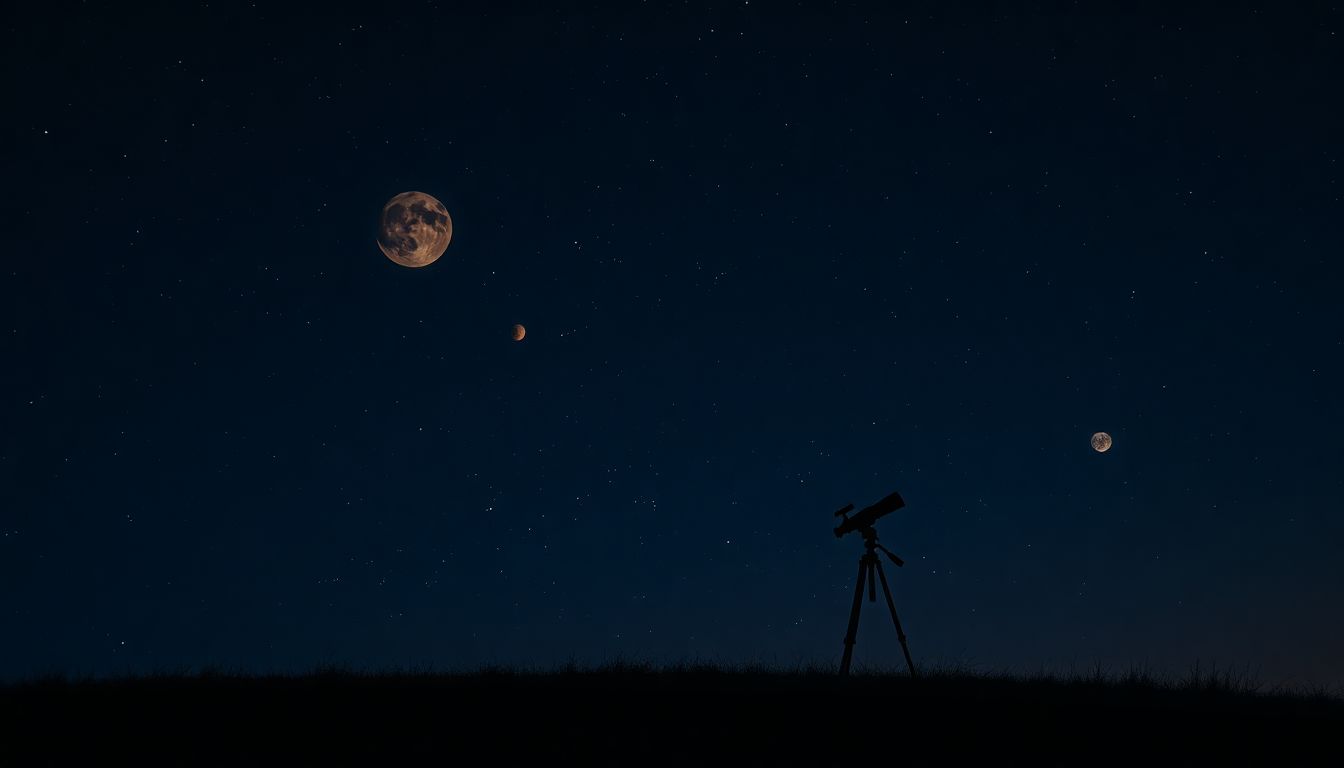
Which Planets Are Visible Tonight and How to Find Them: Your Ultimate Guide to Stargazing
Introduction
Imagine stepping outside after a long day and finding the night sky glowing with planets. There’s something magical about spotting planets with just your eyes or a simple telescope. Knowing which planets are visible tonight makes your sky-watching more exciting and rewarding. Whether you’re a beginner or a casual sky lover, understanding how to find planets adds a new layer of fun to your nights. With the right tools and timing, you can uncover the secrets of the universe from your backyard.
Understanding the Basics of Planet Visibility
What Determines If a Planet Is Visible?
Planets orbit around the sun at different distances, which affects how bright they appear in our sky. When a planet is positioned between Earth and the sun, it might be easier to see. Brightness also depends on how much sunlight they reflect. Weather conditions and your location on Earth influence whether you can see planets tonight. Nighttime, clear skies, and minimal light pollution are key to catching a glimpse.
The Science Behind Planet Visibility
Planets shine by reflecting sunlight. Some, like Venus and Jupiter, are very bright and easy to spot. Others, like Uranus and Neptune, are dimmer and need a telescope. Astronomers measure planet brightness with a scale called magnitude. The lower the number, the brighter the planet. A magnitude of 0 means very bright, while 6 or more is faint or hard to see with the naked eye.
Best Time to Observe Planets
Planets are best visible during specific times of the day. Venus, often called the “Evening Star,” appears just after sunset or before sunrise. Jupiter and Saturn are easier to see late at night or early morning. The moon’s phases also impact visibility — a new moon offers darker skies. Clear, calm weather further improves your chances of catching a clear view.
Which Planets Are Typically Visible Tonight
Visible Planets Overview
Most nights, some of the main planets are visible without special equipment. These include Mercury, Venus, Mars, Jupiter, and Saturn. With telescopes, you might glimpse Uranus and Neptune, but they are harder to find. The visibility of each planet depends on their current position relative to Earth, which changes constantly.
Seasonal and Monthly Variations
Planet visibility shifts throughout the year. For example, Venus appears as the evening or morning star at different times. Mars and Jupiter’s positions change with the seasons, making some months best for viewing them. Check current astronomy charts to see which planets are prominent this month.
Current Night Sky Highlights
Use online tools like sky mapping apps or websites to check real-time which planets are visible tonight. Sometimes, unusual events like planetary conjunctions or bright planets near the moon make the night sky even more spectacular. Staying updated helps plan your stargazing nights.
How to Find and Identify Planets in the Night Sky
Essential Tools and Resources
Start with star charts or free smartphone apps that map the sky for your location. Planetarium software can also guide you. A good pair of binoculars or a small telescope enhances your view of planets. Remember, even the simplest tools help you learn the sky faster.
Step-by-Step Guide to Spotting Planets
Begin with bright planets like Venus or Jupiter, which are easy to see. Find familiar constellations like Orion or Leo to use as landmarks. Once you identify these, planets often appear close by. Use your app or star chart to confirm their position. Keep your device steady and focus carefully.
Expert Tips for Successful Observation
Avoid bright streetlights or city glow as much as possible. High, open areas give the clearest view. Wait for a night with stable, calm air — it makes planets look sharper. Patience pays off, so take your time to scan the sky.
Practical Tips for Enhancing Your Planet Observation Experience
Using Technology and Apps
Download astronomy apps that show real-time sky maps and planet positions. Turn on notifications for upcoming planetary events like conjunctions or best viewing times. These tools make planning your nights a breeze.
Planning Your Observation Session
Create a plan before heading outside. Check the weather forecast and moon phase. Prepare your gear early, bring a chair or blanket for comfort, and dress warmly. Pick a spot away from bright city lights to see more stars and planets.
Recording and Sharing Your Findings
Capture planets using your smartphone and a steady mount. Use apps to improve photos or videos. Share your images and experiences online with fellow astronomy lovers. It’s a great way to learn and inspire others.
Conclusion
Knowing which planets are visible tonight enriches your stargazing experience. Use tools like apps and star charts to stay updated. Remember, patience and preparation make all the difference. Whether you’re just starting or already a star enthusiast, keep looking up. The universe has endless wonders waiting to be seen from your own backyard.
Key Takeaways
- Which planets you see tonight depends on their orbits and your location.
- Use astronomy apps, star charts, and timely observation to find planets easily.
- Regularly checking the sky and staying patient will make you a better skywatcher.
Happy stargazing! Keep exploring, and the universe will never stop surprising you.

